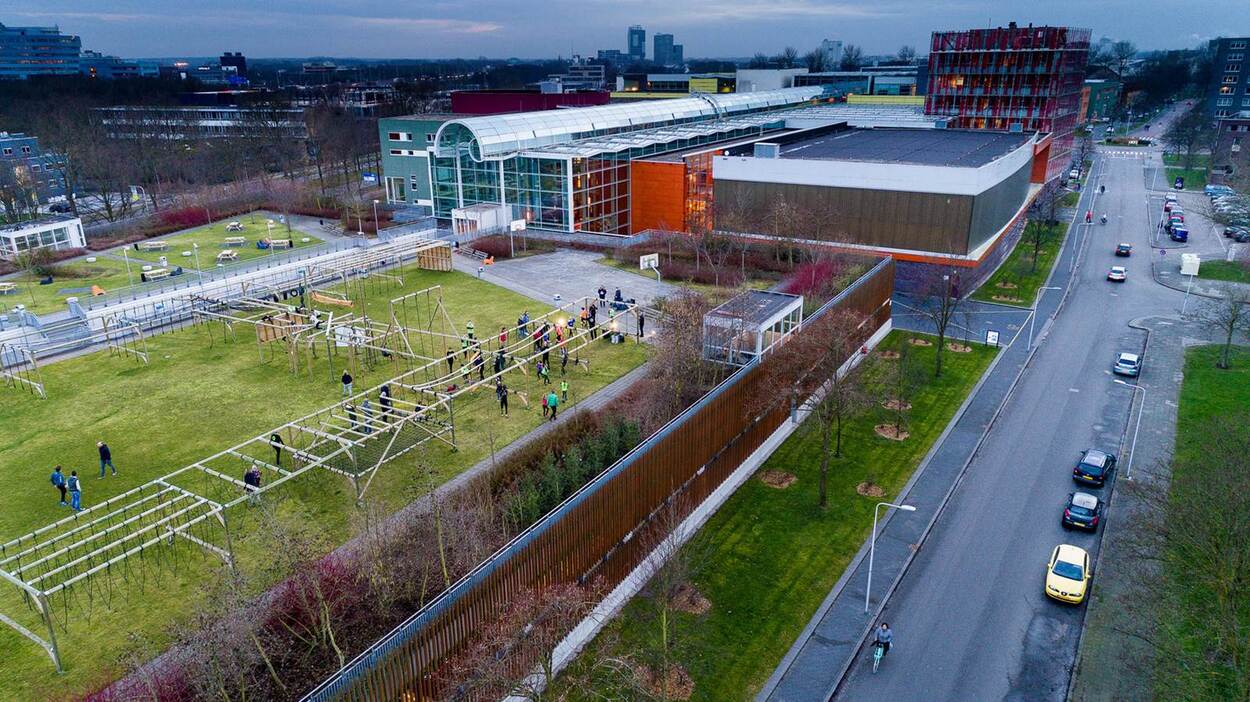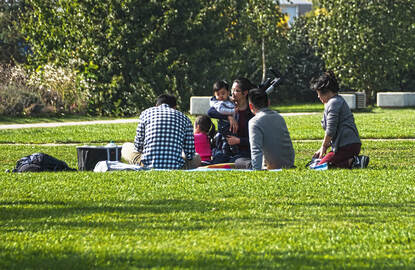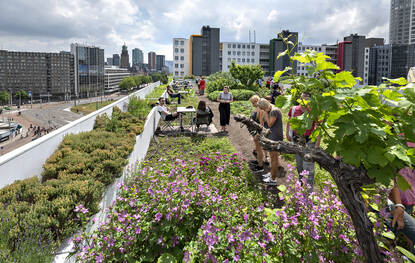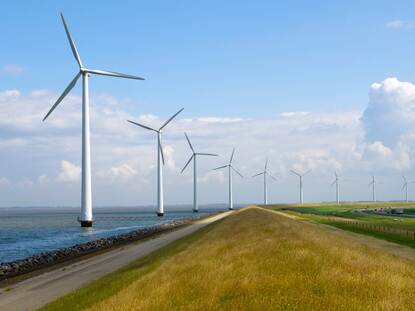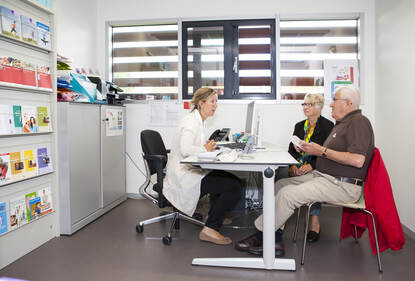The ‘pepper pot’, Zwolle’s famous church tower, is located at the highest point. Zwolle is a low-lying city surrounded by water. This situation makes Zwolle particularly vulnerable to the effects of climate change, warranting a solid, locally developed adaptation strategy. Lisa de Groot, programme manager for Climate Adaptation in Zwolle: “We want our region to be a demo delta that others can learn from.”
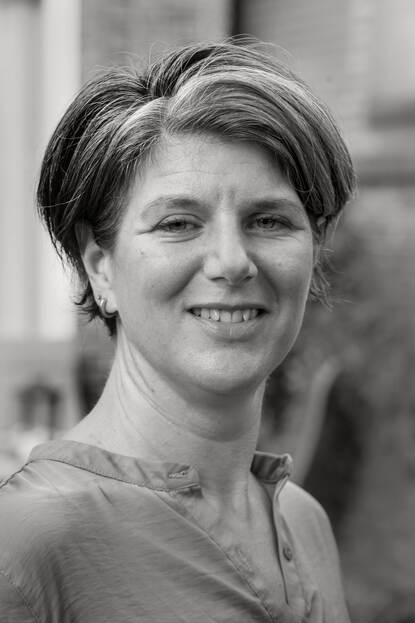
Lisa de Groot: “People often think: Zwolle surely isn’t on a flood plain, that far east? But Zwolle is situated in a river delta, which means low-lying land. Danger surrounds us on all sides – from the IJssel River, the Vecht and the waterways of the Sallandse Weteringen.”
Flood defences protect the area around Zwolle from high water, but the city centre lies outside the dikes. The city canals have open connections to the IJsselmeer lake. More water flowing into the IJsselmeer therefore immediately results in higher water levels in the city canals.
Liveable city
“Climate change is putting us under more and more pressure,” De Groot says. “How do we maintain a liveable city? Flooding is a problem for us, but we are also facing desiccation as a result of the dry, sandy soil in the area. The soil does not absorb enough water. We are not just talking about Zwolle here, of course; water is not constrained by city limits. Throughout the region, we are focusing on what is known as a resilient water system.”
The aim is to ensure that Zwolle is completely climate-proof in 2050. To get there, Zwolle’s adaptation strategy is structured in three themes: Flood resilience; Green-blue network for a climate-proof city, and Greening urban infrastructure.
50 Shades of Green
As part of the city-wide greening movement, all kinds of green initiatives have been launched in streets and neighbourhoods. An example: “50 Shades of Green” in the Assendorp neighbourhood. Local residents are adding insulation to their homes, conserving energy, and promoting renewable energy generation. They are also adopting initiatives to make the neighbourhood greener and improve sustainability in local mobility solutions. In doing so, they are combining adaptation challenges with various challenges associated with the energy transition and healthy mobility, aiming to achieve an attractive residential and living environment.
Zwolle also participated enthusiastically in NK Tegelwippen: the ‘national tile-flipping championships’, in which residents remove paving tiles to make room for their own façade gardens. “We want to make all the streets in Zwolle greener,” De Groot explains. “That is a good idea in every respect. It is also in line with our mobility vision, which puts pedestrians first. How the street or neighbourhood is perceived is very important to us.”
Green areas have proven health benefits. Greenery contributes to our happiness and health, and it therefore also facilitates climate adaptation. Green areas are also an effective remedy for heat stress. Greenery provides shade and cooler temperatures.
At the city level, Zwolle is therefore working to establish a green-blue network. The green elements include gardens, parks, city squares, façade gardens, green roofs, more trees, and verges lined in flowers. Connected ponds, ditches, canals and temporary water storage areas constitute the blue elements in the network. This ‘linked chain’ ensures better storage for excess water.
Good contact with local residents
“The heat-related issues are more problematic,” De Groot says. “What can be done to reduce the health effects of heat? Through a map of climate opportunities, we are providing a visual overview. How far is it to the next cool location? That is one of the things we want local residents to be able to see.”
“Good contact with local residents is our guiding principle. We involve the inhabitants in the green city. We want residents to have a better understanding of the effects of climate change. The SensHagen project clearly illustrates how that works. It is a project for, by and with the people living in the Stadshagen neighbourhood.”
In this project, local residents measure temperature and air quality via a sensor in their gardens. Data is sent to RIVM and to the Royal Dutch Meteorological Institute (KNMI). After some time, the readings yield a clear overview of local climate conditions in the neighbourhood. As a result, the municipality can take measures to improve the specific situation.
Creative solutions
De Groot sees many opportunities in the field of climate adaptation. “I like to turn it around: how can housing development contribute to reducing the effects of climate change? How can these things facilitate each other? That approach makes it easier for colleagues to come up with really creative solutions.”
Working closely with Climate Campus, the municipality of Zwolle is developing and sharing knowledge. Climate Campus is a network of public authorities, schools and universities, research institutes, entrepreneurs and civic initiatives. “It is important to face the problems together,” De Groot states. “We want our region to be a ‘demo delta’ that others can learn from.”
In Zwolle itself, hashtags like #Buitengeluk (outdoor happiness) are used enthusiastically. Lisa de Groot: “We asked ourselves: why are we doing all this? The answer was: with a view to achieving outdoor happiness. The quality of the living environment, your own street, contributes to health. By ensuring lots of blue and green, but also by facilitating social cohesion and encounters.”
